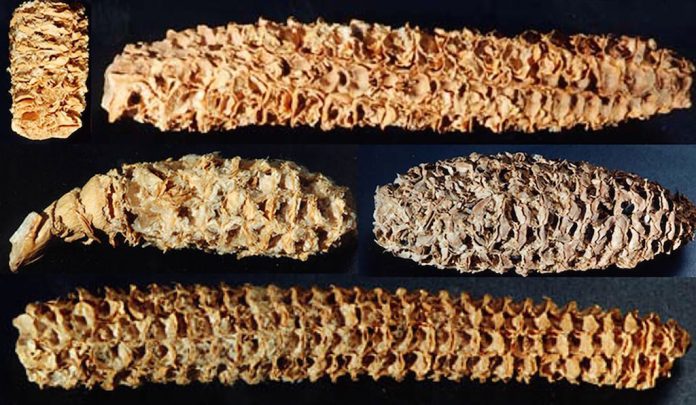
UNIVERSITY PARK, Pa. — Researchers studying ancient corn cobs found at a Native American archeological site have recovered a 1,000-year-old virus, the oldest plant virus ever reported.
Only a few RNA viruses had been discovered previously from archaeological samples, the oldest dating from about 750 years ago.
The new discovery came as the research team examined ancient plant material from Antelope House, an Ancestral Puebloan ruin in Arizona’s Canyon de Chelly National Monument.
The Ancestral Puebloans who lived in the canyon planted crops such as maize, beans and squash. During the excavation of Antelope House by the National Park Service in the 1970s, more than two tons of plant refuse, in highly recognizable form, were recovered.
“It’s clear from these remains that maize was a major food source for the inhabitants,” said lead researcher Marilyn Roossinck, professor of plant pathology and environmental microbiology, College of Agricultural Sciences, Penn State.
The maize remnants recovered at Antelope House consisted of cobs, ears with kernels, individual kernels, husks, leaves, shanks, stem portions and tassels. Using carbon 14 dating, researchers confirmed that the age of the ancient samples was about 1,000 years old.
While analyzing cobs, the scientists isolated three nearly complete genomes of a previously unknown virus of the family Chrysoviridae, which infect plants and fungi.
The researchers, who report their findings in the January 2019 issue of the Journal of Virology, noted that chrysoviruses are persistent plant viruses that are transmitted from generation to generation through seeds and can remain in their hosts for very long time periods.
Persistent viruses typically do not cause disease and rarely are detected.
Noteworthy
This is the first chrysovirus described from maize, Roossinck noted.
“When we analyzed modern corn samples, we found the same chrysovirus with only about 3 percent divergence from the ancient samples,” she said. “Most RNA viruses, with short generation times and error-prone replication, evolve rapidly. However, persistent viruses have very stable genomes.”
Roossinck said the most interesting aspect of the findings for the team is that the virus has been maintained in corn for so long.
“That implies that the virus might confer some potential benefit to the plant, but we haven’t shown that yet,” she said.
The research team
Other members of the research team were Mahtab Peyambaria and Nicholas Stoler, Center for Infectious Disease Dynamics, Penn State; and Sylvia Warner and Drew Rainer, Noble Research Institute, Samuel Roberts Noble Foundation, Ardmore, Oklahoma.
The Samuel Roberts Noble Foundation, the Penn State College of Agricultural Sciences and the Huck Institutes of the Life Sciences, Penn State, supported this work.









